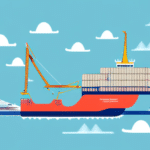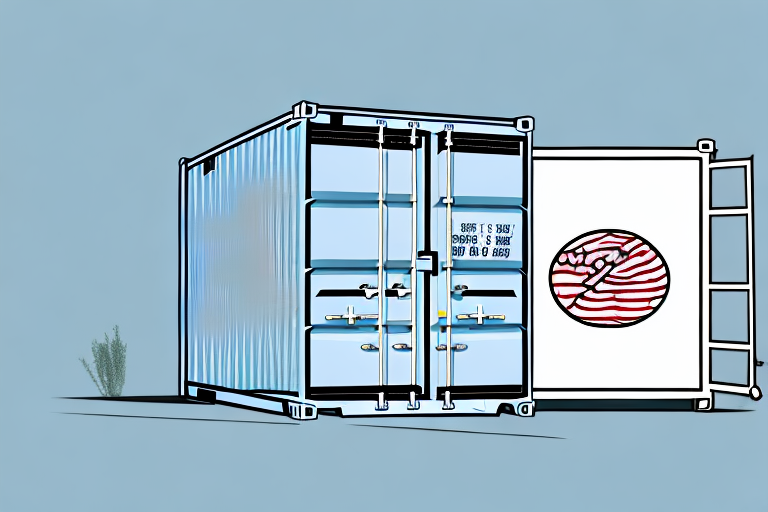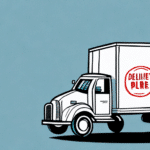Understanding FOB Shipping Point in International Trade
If you are involved in buying or selling goods that require transportation, understanding shipping terms like FOB Shipping Point is crucial. This term defines who bears the risk and responsibility for the goods and the freight cost during transportation. This article explores the ins and outs of FOB Shipping Point, how responsibility and cost allocation can be managed effectively to avoid disputes and minimize costs.
What is FOB Shipping Point?
FOB stands for "Free on Board," indicating that the seller fulfills their obligation when the goods are loaded onto the carrier's truck at the shipping point. The shipping point is typically the seller's factory, warehouse, or any other designated location specified in the contract. After this point, the buyer assumes responsibility for the goods and the freight costs.
FOB Shipping Point vs. FOB Destination
It is important to differentiate between FOB Shipping Point and FOB Destination. With FOB Destination, the seller remains responsible for the goods until they reach the buyer's specified location, including any damages or losses during transit. In contrast, FOB Shipping Point transfers this responsibility to the buyer once the goods are loaded onto the carrier's truck.
Key Differences
- Risk Transfer: FOB Shipping Point transfers risk to the buyer upon shipment, whereas FOB Destination keeps the risk with the seller until delivery.
- Freight Costs: Under FOB Shipping Point, the buyer pays for freight costs. Under FOB Destination, the seller covers these costs.
Types of FOB Shipping Point Contracts
FOB Shipping Point can be customized in various contract types to fit specific needs and risk allocations:
FOB Origin
In an FOB Origin contract, the buyer bears all risks and costs once the goods are shipped. This includes arranging and paying for freight and assuming responsibility for any damage or loss during transit.
FOB Shipping Point, Freight Prepaid
This variation means the seller is responsible for the shipping costs up to the shipping point. The seller also bears the risk of loss or damage during transit.
FOB Shipping Point, Freight Collect
Under FOB Shipping Point, Freight Collect, the buyer is responsible for paying freight costs, assuming all risks once the goods are shipped.
Impact of FOB Shipping Point on Freight Costs
FOB Shipping Point significantly influences how freight costs are allocated between the buyer and seller:
- Buyer Responsibilities: Arrange, pay, and manage freight costs post-shipment.
- Seller Responsibilities: Cover costs up to the shipping point.
This arrangement allows buyers to choose carriers that offer competitive rates, potentially reducing overall transportation costs.
Factors Influencing Freight Costs in FOB Shipping Point
Several factors can affect freight costs under FOB Shipping Point terms:
- Type of Goods and Packaging: Hazardous materials or fragile items may require special handling, increasing costs.
- Distance and Mode of Transportation: Longer distances and air freight are generally more expensive than shorter, ground transportation.
- Carrier Rates and Services: Different carriers offer varying rates based on their service quality and reliability.
- Fuel Prices and Taxes: Fluctuations in fuel costs can impact overall freight expenses.
- Seasonal Demand: Peak seasons may lead to higher rates due to increased demand and limited capacity.
Role of Carriers in FOB Shipping Point
Carriers are pivotal in FOB Shipping Point transactions as they handle the transportation of goods. Selecting reliable carriers ensures timely delivery and minimizes the risk of damage or loss. Buyers should assess carrier reputations, service offerings, and pricing to make informed decisions.
Responsibilities of Buyer and Seller
Clear delineation of responsibilities between buyer and seller under FOB Shipping Point is essential to prevent disputes:
Seller's Responsibilities
- Loading goods onto the carrier's truck at the shipping point.
- Covering all costs up to the shipping point.
- Ensuring goods are properly packaged and ready for transport.
Buyer's Responsibilities
- Arranging and paying for freight from the shipping point to the final destination.
- Assuming risk for any damages or losses during transit.
- Providing accurate shipping information.
Legal Considerations for FOB Shipping Point
FOB Shipping Point agreements are governed by various legal frameworks, including the Uniform Commercial Code (UCC) in the United States and the International Commercial Terms (Incoterms) internationally. These regulations define obligations, risk transfers, and liability, ensuring both parties understand their legal standing.
Consulting with legal experts is advisable to ensure compliance with applicable laws and to tailor contracts to specific business needs.
Practical Examples of FOB Shipping Point Transactions
Consider a manufacturer selling products to a retailer under FOB Shipping Point terms. The manufacturer loads the goods onto the carrier's truck at their warehouse, fulfilling their responsibility. The retailer then arranges and pays for the transportation from the warehouse to their store. If any damage occurs during transit, the retailer bears the loss.
Another example is an exporter shipping goods overseas. Once the goods are loaded onto the vessel at the port of origin, the importer is responsible for freight costs and any risks associated with the shipment.
Negotiating Favorable Freight Terms
Effective negotiation can lead to significant savings and better service:
- Compare Carriers: Assess different carriers' rates and services to find the best fit.
- Consolidate Shipments: Combining multiple shipments can reduce overall costs.
- Leverage Volume: Negotiating based on shipment volume or long-term contracts can secure discounts.
- Clear Communication: Ensure all terms, responsibilities, and expectations are clearly communicated and documented.
Managing Freight Costs in FOB Shipping Point Transactions
To effectively manage freight costs:
- Optimize Shipping Routes: Minimize distance and transit time to reduce costs.
- Select the Right Carrier: Choose carriers that offer reliable services within your budget.
- Proper Packaging: Prevent damage and loss by using appropriate packaging materials.
- Track Shipments: Use tracking systems to monitor shipments and ensure timely deliveries.
- Regularly Review Costs: Analyze freight expenditures to identify opportunities for savings.
Common Mistakes to Avoid
Avoid these pitfalls in FOB Shipping Point transactions:
- Unclear Terms: Failing to clearly define shipping terms can lead to misunderstandings and disputes.
- Underestimating Costs: Not accurately calculating freight costs may erode profit margins.
- Choosing Inadequate Carriers: Selecting unreliable carriers can result in delays and damaged goods.
- Poor Documentation: Inadequate records can complicate claims for damages or losses.
- Ignoring Regulations: Non-compliance with legal requirements can lead to penalties.
Future Trends in Freight Cost Management for FOB Shipping Point
The freight industry is evolving with technological advancements and changing market dynamics:
- Artificial Intelligence and Data Analytics: Enhancing supply chain visibility and predictive analytics for better decision-making.
- Autonomous Vehicles and Drones: Revolutionizing transportation methods, potentially reducing costs and delivery times.
- Blockchain Technology: Increasing transparency and security in freight transactions.
- Collaborative Platforms: Facilitating closer partnerships between carriers, buyers, and sellers to streamline operations.
Conclusion
FOB Shipping Point is a fundamental term in international trade that delineates the responsibilities, risks, and freight costs between buyers and sellers. By thoroughly understanding FOB Shipping Point and implementing best practices in freight cost management, businesses can minimize disputes, optimize costs, and enhance their overall profitability.








